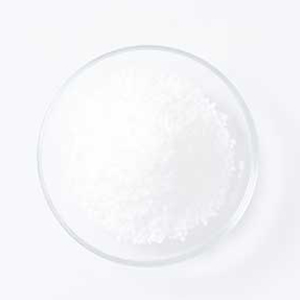
News
พ.ย. . 23, 2024 19:28 Back to list
Production of Biostimulants from Dry Molasses in a Plant-Based Facility
The Future of Agriculture Harnessing the Power of Dry Molasses Plant Biostimulants
In recent years, the agricultural industry has witnessed a transformative shift towards sustainable practices, driven by the pressing need to improve crop yields while minimizing environmental impacts. One innovative solution that has emerged is the use of dry molasses plant biostimulants, a product derived from the sugar processing industry. This remarkable biostimulant is gaining traction for its numerous benefits in enhancing plant growth and soil health.
What is Dry Molasses?
Dry molasses is a concentrated form of molasses, a byproduct of sugar extraction from sugarcane or sugar beets. Unlike the syrupy form of molasses, dry molasses is a powdered substance that is easier to handle and apply in various agricultural settings. It retains many of the nutritional and bioactive components present in traditional molasses, including carbohydrates, vitamins, and minerals. Its rich composition makes dry molasses an attractive biostimulant for promoting plant health and resilience.
Benefits of Dry Molasses as a Biostimulant
1. Enhanced Soil Quality One of the most significant advantages of dry molasses is its ability to improve soil structure and fertility. When applied to the soil, dry molasses provides an immediate source of organic matter that enhances microbial activity. These microbes break down organic materials, creating humus, which improves soil aeration, moisture retention, and nutrient availability.
2. Stimulating Plant Growth Dry molasses contains natural sugars and nutrients that stimulate plant growth. The sugars serve as an energy source for soil microorganisms, which in turn promote nutrient cycling and availability. Additionally, the nutrients present in dry molasses enhance root development and overall plant vigor, leading to healthier and more robust crops.
3. Disease Resistance Plants treated with dry molasses exhibit improved resilience to environmental stresses and diseases. The enhanced microbial activity in the soil, facilitated by dry molasses, helps suppress harmful pathogens and promote beneficial ones. This biological balance contributes to a healthier growing environment and reduces the need for chemical pesticides.
4. Sustainable Fertility Practices Dry molasses is a sustainable alternative to synthetic fertilizers. Its use can reduce the input of chemical fertilizers in agricultural systems, leading to a decrease in soil and water pollution. Moreover, it can help farmers transition to organic farming practices by providing essential nutrients without the drawbacks associated with conventional fertilizers.
dry molasses plant biostimulant factory

Production of Dry Molasses Biostimulants
Establishing a dry molasses biostimulant factory involves several key stages. Initially, sourcing high-quality molasses from sugar production facilities is crucial. Once sourced, the molasses undergoes a drying process to produce the desired powder form. This involves evaporation techniques that efficiently remove moisture while retaining the beneficial properties of molasses.
Ensuring the quality and consistency of the final product is paramount. Rigorous testing for nutritional content and microbial activity ensures that the biostimulant meets agricultural standards. Additionally, eco-friendly production methods should be prioritized to align with the sustainable goals of modern agriculture.
Market Potential and Future Prospects
The global biostimulants market is projected to grow exponentially in the coming years, with dry molasses plant biostimulants poised to play a significant role within this expansion. Agricultural producers, recognizing the benefits of sustainable practices, are increasingly seeking biostimulant solutions. The versatility of dry molasses makes it suitable for a wide range of crops, from vegetables to fruits and grains, thus catering to diverse agricultural needs.
Furthermore, as consumer demand for organic and sustainably grown produce escalates, the adoption of biostimulants like dry molasses will be paramount. Governments and agricultural organizations may also play a role in promoting the use of biostimulants through subsidies and educational programs that highlight their benefits.
Conclusion
The adoption of dry molasses plant biostimulants represents a pivotal shift towards more sustainable agricultural practices. By enhancing soil quality, promoting plant health, and supporting environmentally friendly farming, dry molasses stands as a testament to the innovative solutions that can address the challenges faced by modern agriculture. As the industry moves towards greater sustainability, the potential of dry molasses will undoubtedly shine, fostering a healthier planet and a more resilient agricultural system.
-
Polyaspartic Acid Salts in Agricultural Fertilizers: A Sustainable Solution
NewsJul.21,2025
-
OEM Chelating Agent Preservative Supplier & Manufacturer High-Quality Customized Solutions
NewsJul.08,2025
-
OEM Potassium Chelating Agent Manufacturer - Custom Potassium Oxalate & Citrate Solutions
NewsJul.08,2025
-
OEM Pentasodium DTPA Chelating Agent Supplier & Manufacturer High Purity & Cost-Effective Solutions
NewsJul.08,2025
-
High-Efficiency Chelated Trace Elements Fertilizer Bulk Supplier & Manufacturer Quotes
NewsJul.07,2025
-
High Quality K Formation for a Chelating Agent – Reliable Manufacturer & Supplier
NewsJul.07,2025
